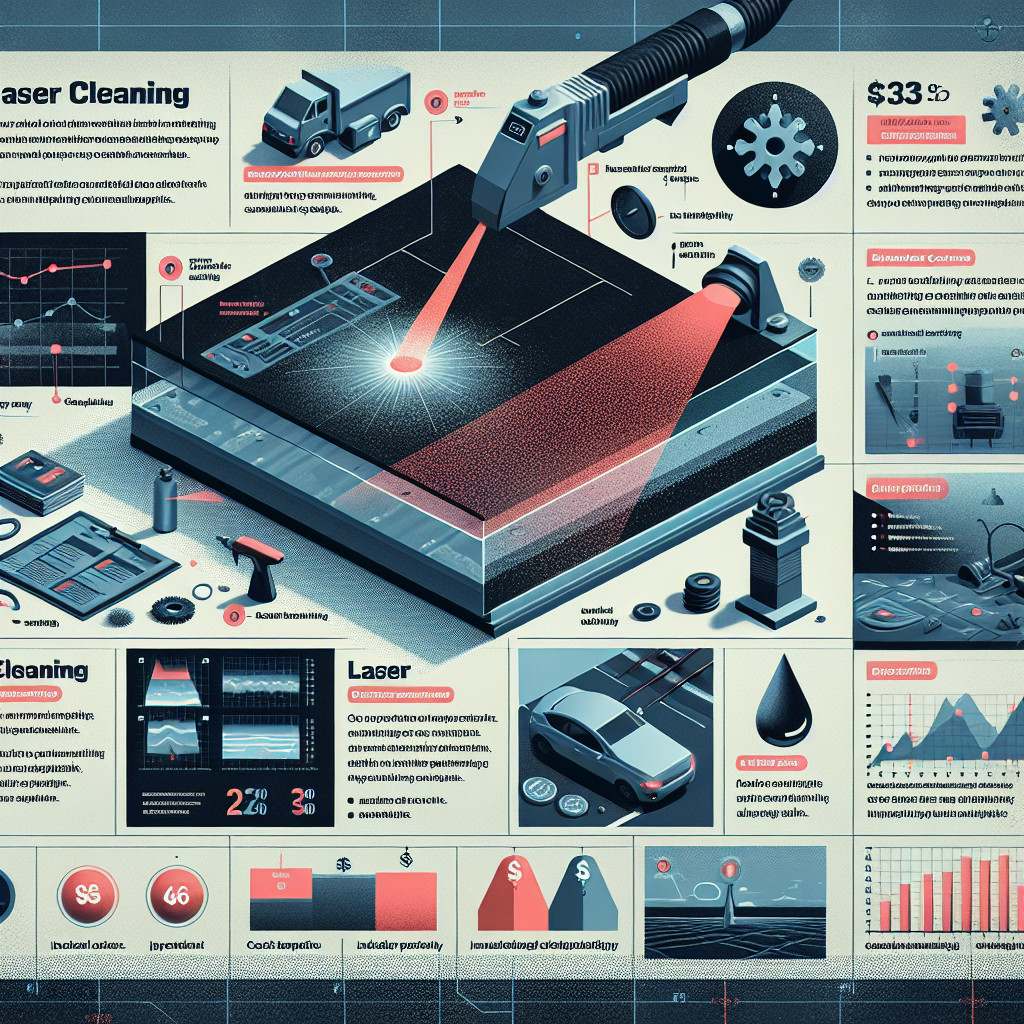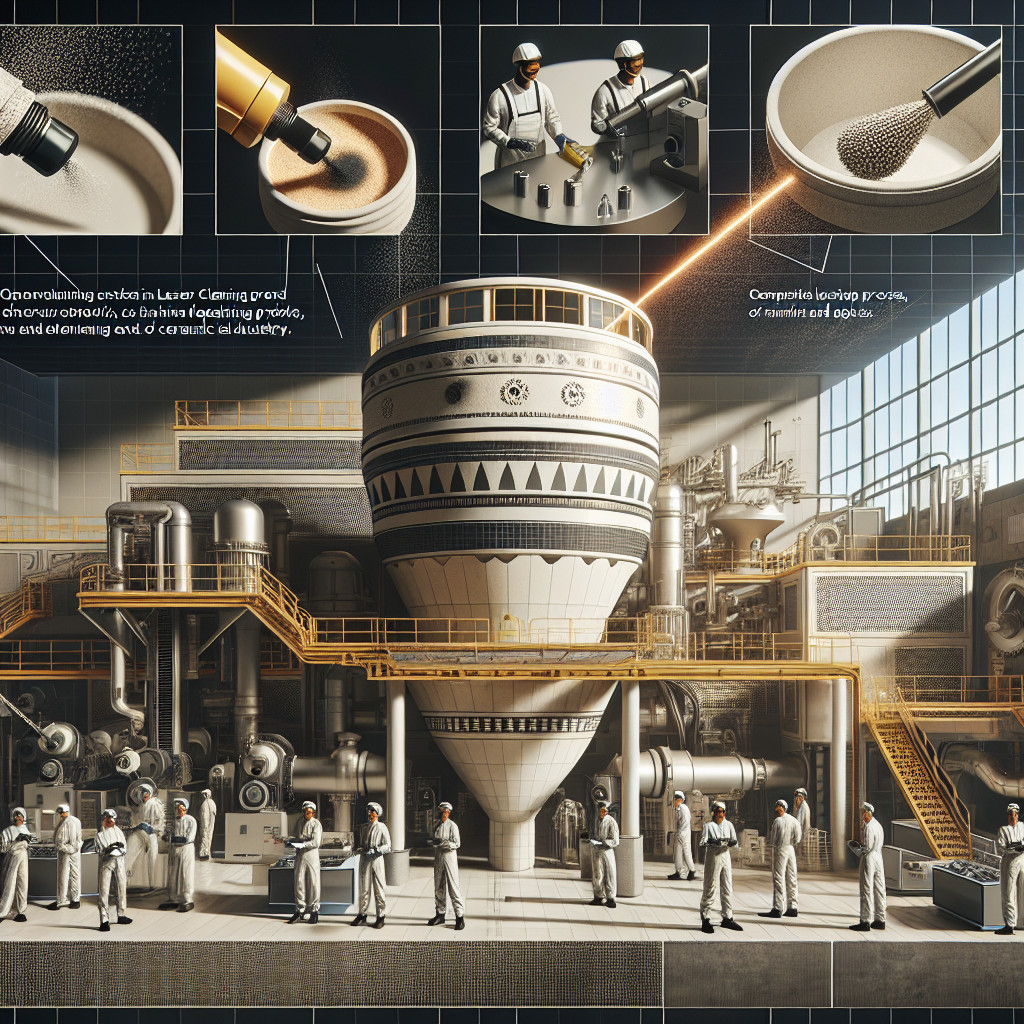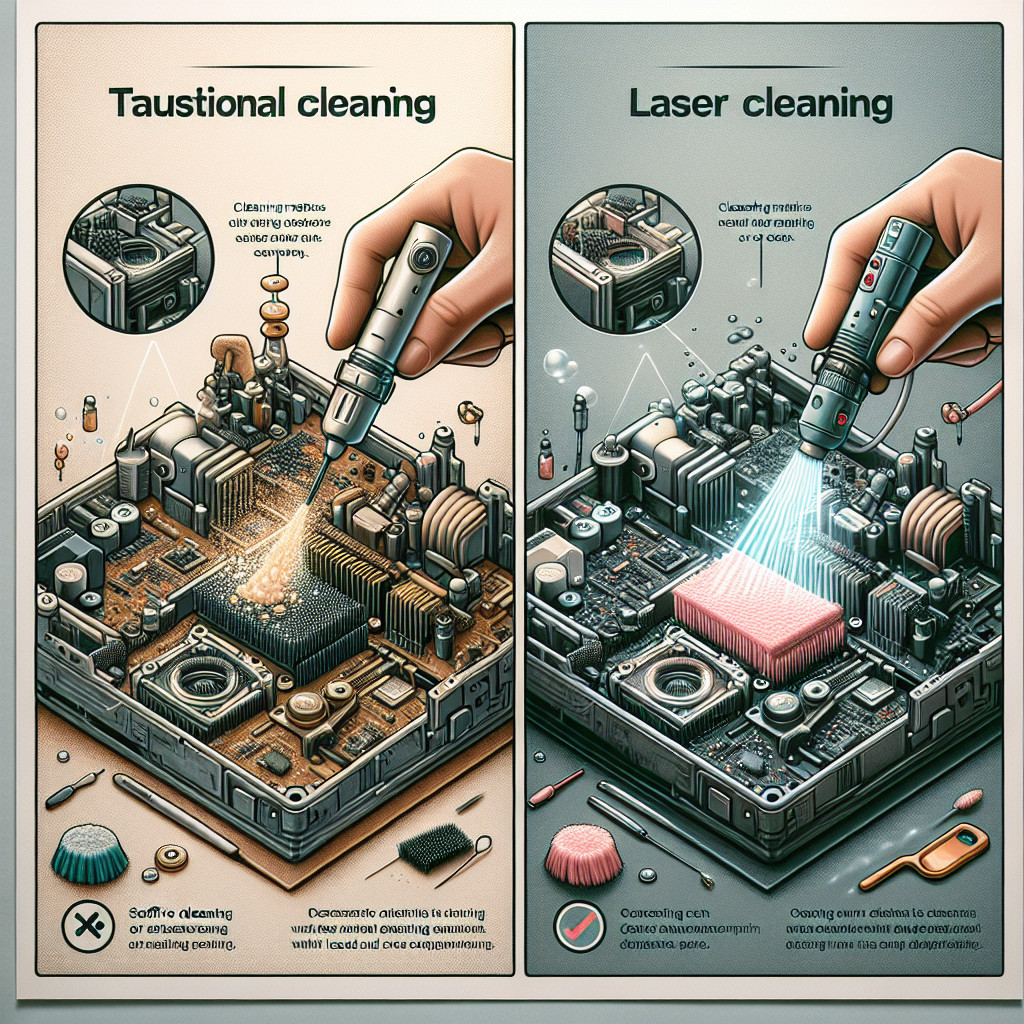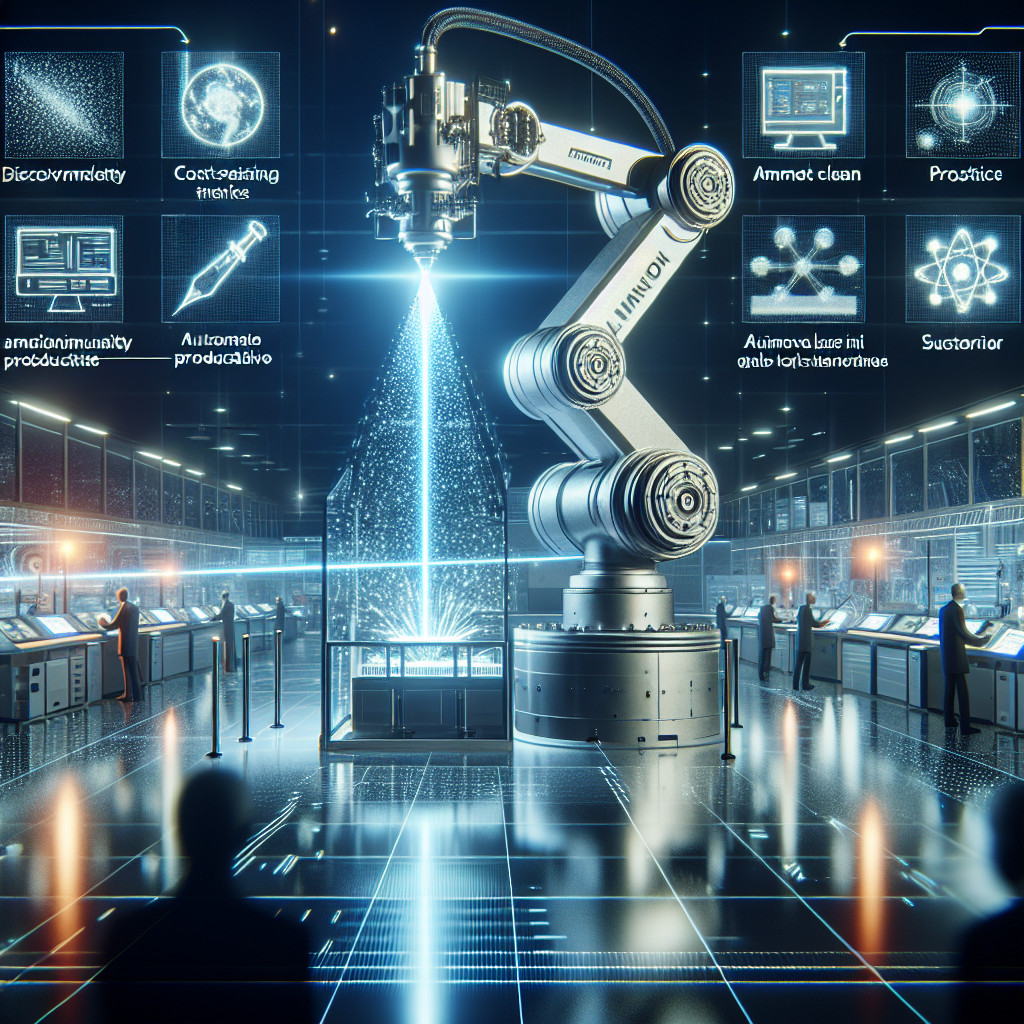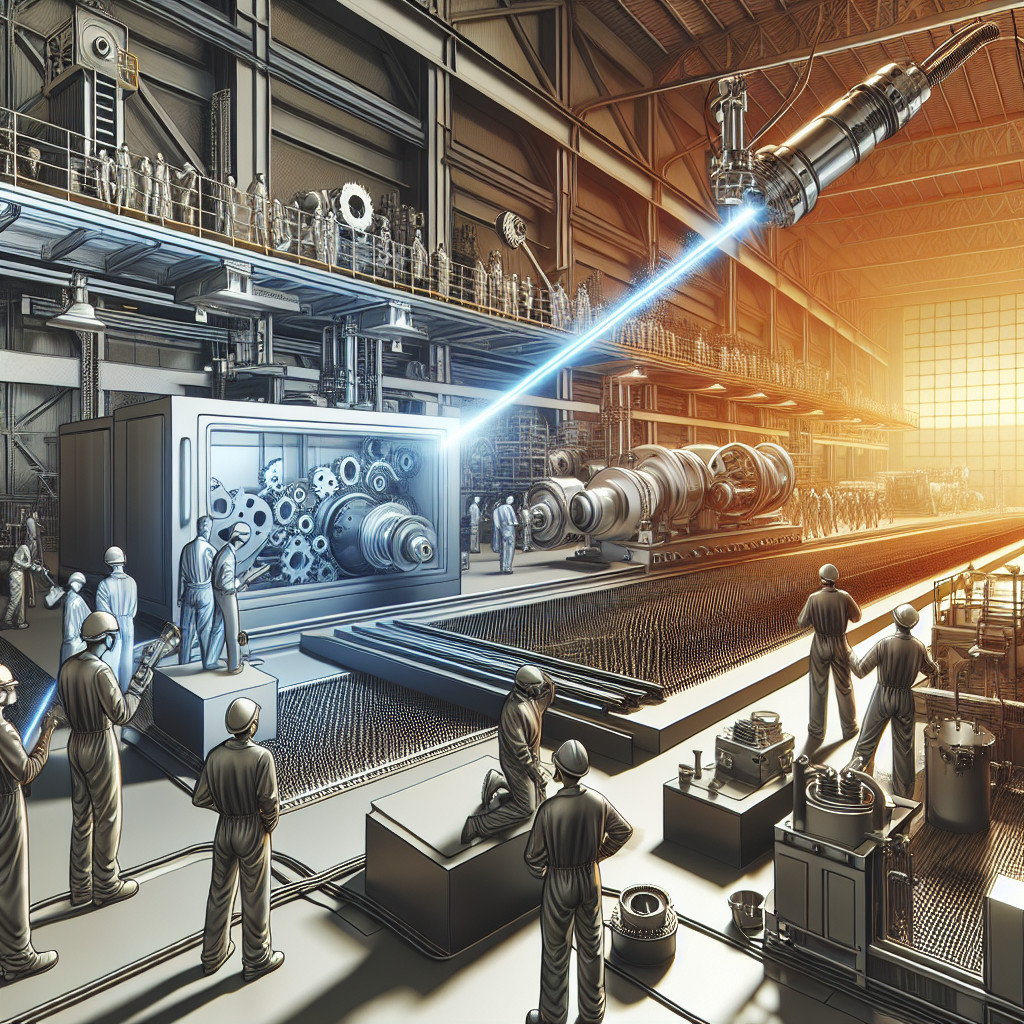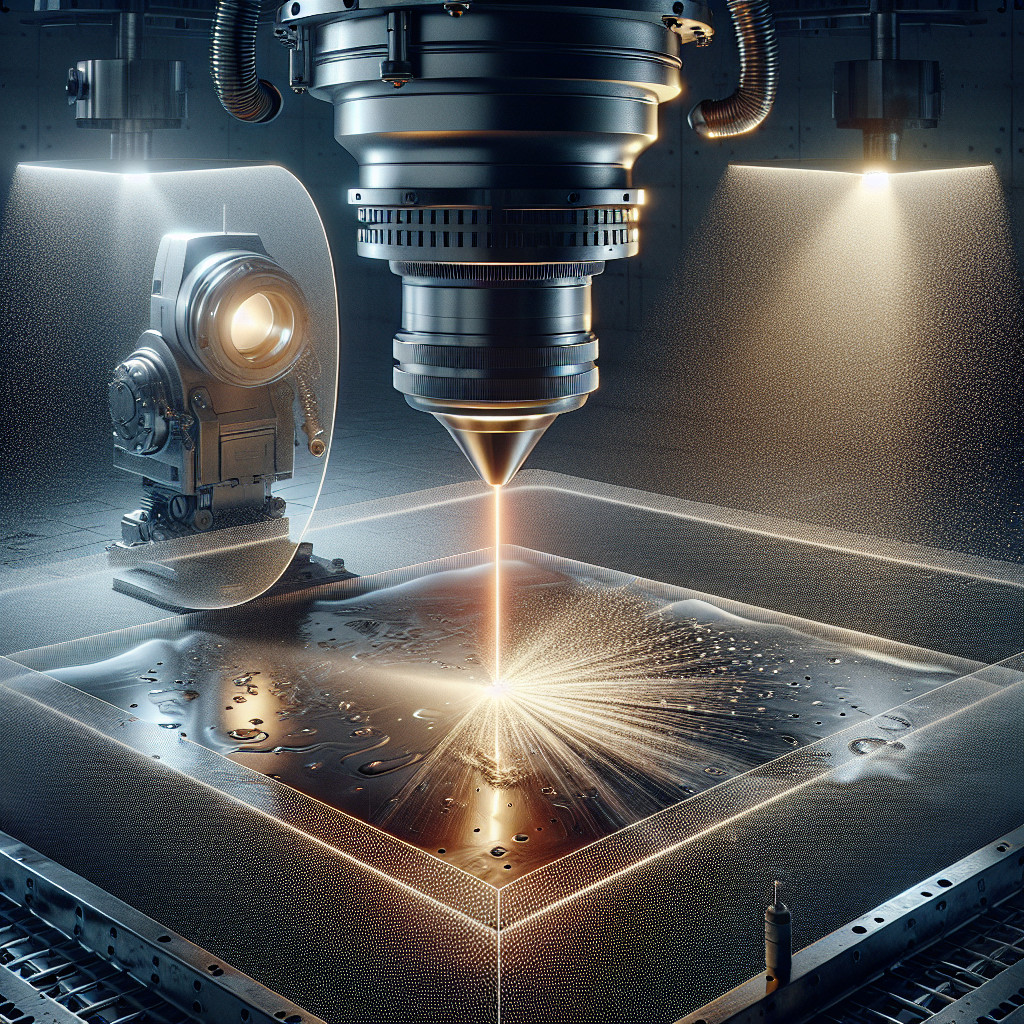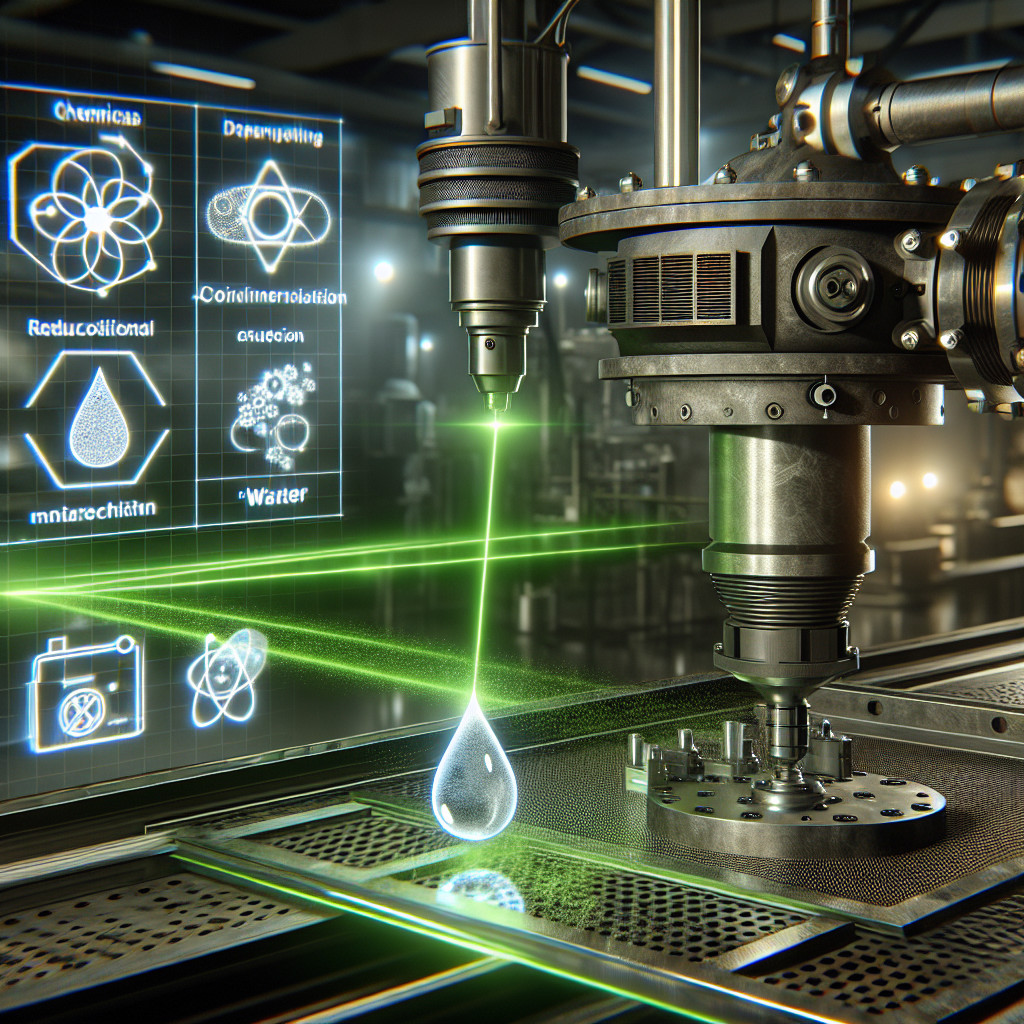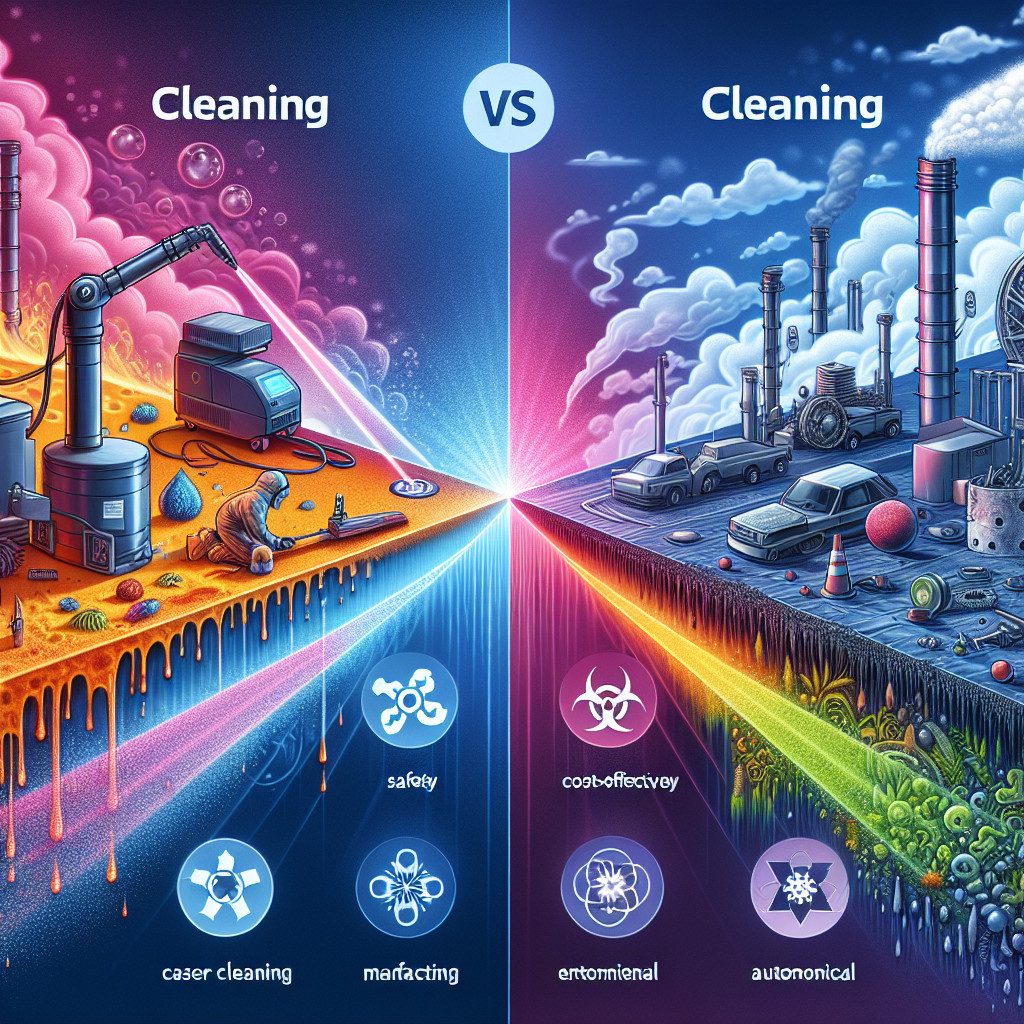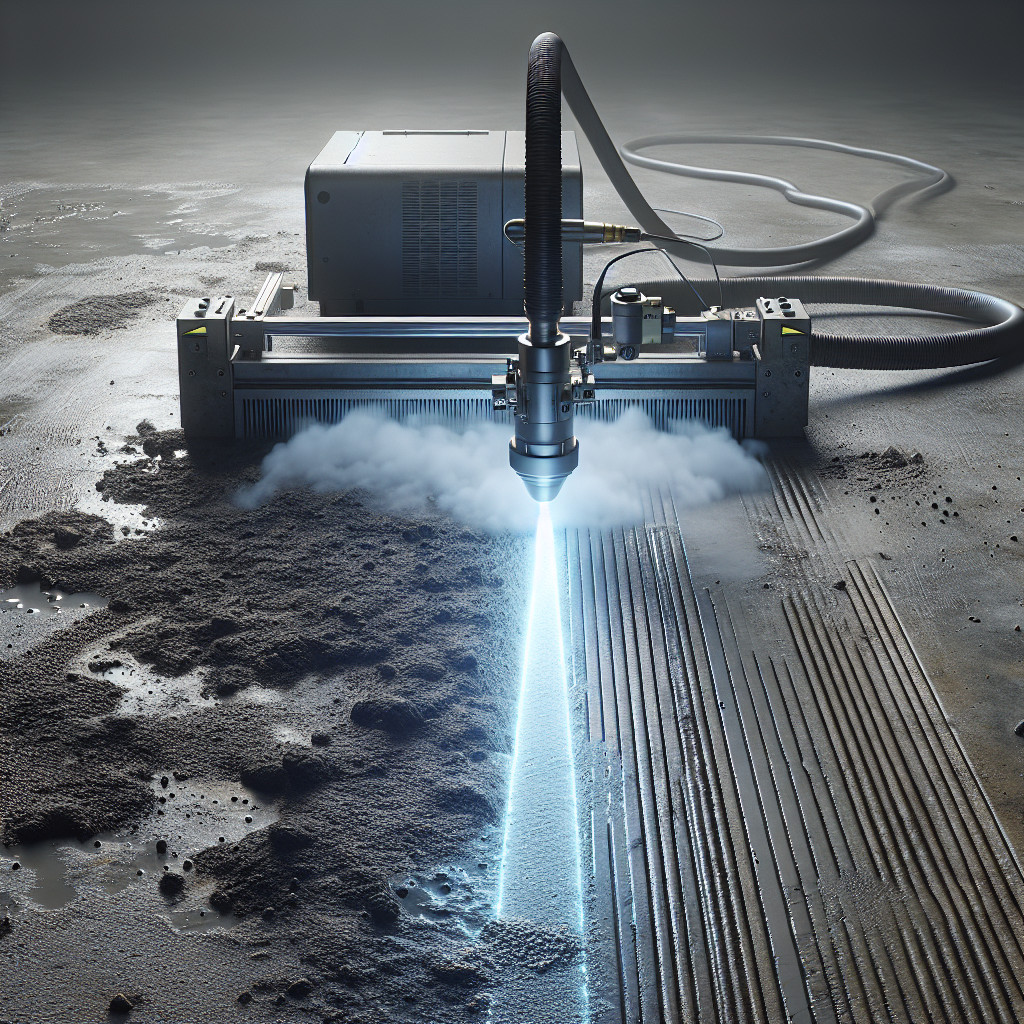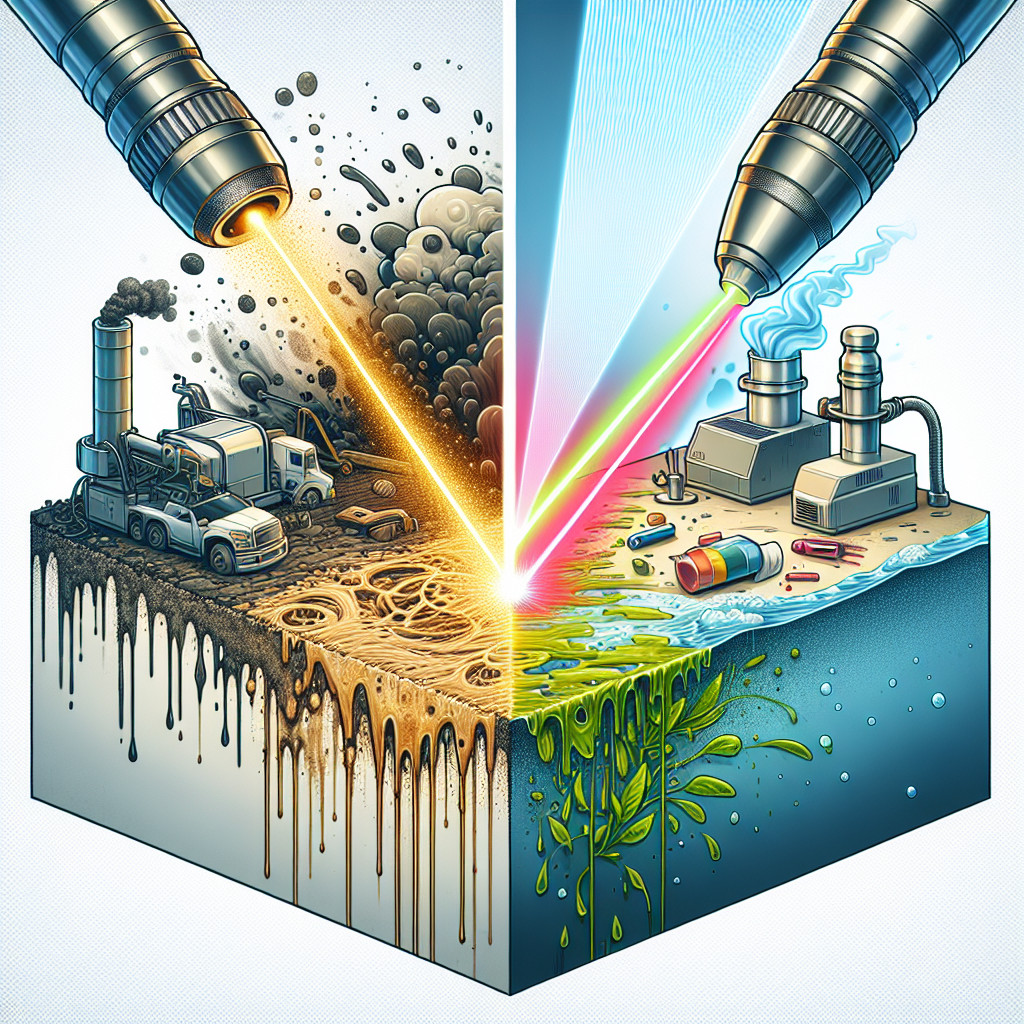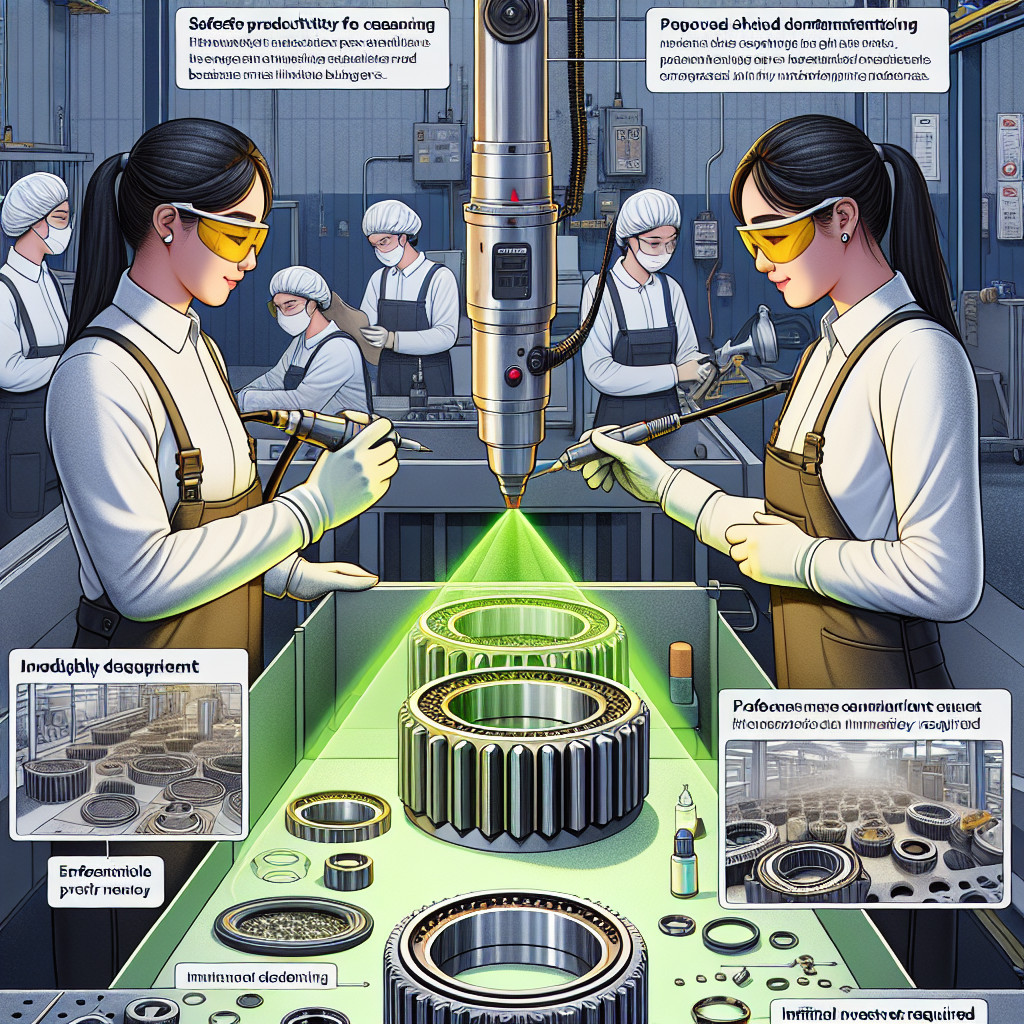- The principles of laser cleaning and its impact on safety and ecology
- The potential hazards associated with laser cleaning and how to mitigate them
- The impact of laser cleaning on energy consumption and carbon footprint
- The use of laser cleaning in historical preservation and restoration projects
- The impact of laser cleaning on the reduction of water consumption in cleaning processes
- The potential risks and benefits of laser cleaning in the oil and gas industry
- The advantages of laser cleaning over traditional cleaning methods in terms of safety and ecology
- The impact of laser cleaning on air quality and indoor pollution
The principles of laser cleaning and its impact on safety and ecology
One of the key advantages of laser cleaning is its ability to remove contaminants without causing any damage to the underlying surface. Unlike traditional cleaning methods that often involve the use of harsh chemicals or abrasive materials, laser cleaning is a gentle and precise process that does not result in any physical or chemical alteration of the surface. This makes it an ideal choice for cleaning delicate or sensitive materials such as historical artifacts, electronic components, or works of art.
In addition to its effectiveness, laser cleaning also offers several safety benefits. Since it is a non-contact cleaning method, there is no risk of physical injury to the operator. Traditional cleaning methods often involve manual scrubbing or the use of high-pressure water jets, which can pose a safety hazard. Laser cleaning eliminates the need for such physical contact, ensuring a safer working environment for operators.
Furthermore, laser cleaning is an environmentally friendly cleaning method. Traditional cleaning methods often involve the use of chemicals that can be harmful to both human health and the environment. These chemicals can contaminate water sources or release toxic fumes into the air. Laser cleaning, on the other hand, does not require the use of any chemicals, making it a clean and sustainable alternative. The only byproduct of laser cleaning is the vaporized or ablated material, which can be easily collected and disposed of properly.
The impact of laser cleaning on safety and ecology is significant. By eliminating the use of harsh chemicals and abrasive materials, laser cleaning reduces the risk of chemical exposure for both operators and the environment. It also minimizes the generation of hazardous waste, as the only waste produced is the removed contaminants. This makes laser cleaning a more sustainable and eco-friendly cleaning method compared to traditional alternatives.
In conclusion, laser cleaning is a highly effective and safe cleaning method that has a positive impact on both safety and ecology. Its non-contact nature ensures operator safety, while its chemical-free process makes it environmentally friendly. Laser cleaning is a technology that holds great potential for various industries, from manufacturing and automotive to conservation and restoration. By embracing laser cleaning, we can achieve cleaner and safer environments while minimizing our impact on the planet.
Keywords: laser cleaning, non-contact cleaning, contaminants, laser-induced breakdown, delicate materials, safety benefits, environmentally friendly, sustainable, hazardous waste, operator safety, chemical-free process.
Long-tail phrases:
– Revolutionary technology for surface cleaning
– Laser-induced breakdown for contaminant removal
– Gentle and precise cleaning method
– Non-contact cleaning for delicate materials
– Safety benefits of laser cleaning
– Environmentally friendly alternative to traditional cleaning methods
– Reduction of hazardous waste through laser cleaning
– Sustainable cleaning solution for various industries
– Minimizing environmental impact with laser cleaning.
The potential hazards associated with laser cleaning and how to mitigate them
Another hazard is the potential for skin burns. Laser beams can generate a significant amount of heat, especially when focused on a small area. If the laser beam comes into contact with the skin, it can cause burns ranging from mild to severe, depending on the power and duration of exposure. Operators should always wear protective clothing, including gloves and long-sleeved shirts, to minimize the risk of skin burns.
Additionally, laser cleaning can produce hazardous fumes and particles. When the laser beam interacts with the surface being cleaned, it can vaporize or ablate the contaminants, releasing potentially toxic gases and particles into the air. These fumes and particles can pose respiratory hazards if inhaled. To mitigate this risk, laser cleaning should be performed in a well-ventilated area, and operators should wear appropriate respiratory protection, such as masks or respirators.
Furthermore, laser cleaning can create fire hazards. The intense heat generated by the laser beam can ignite flammable materials, such as dust, solvents, or gases, present on the surface being cleaned. It is essential to remove or properly protect any flammable materials in the vicinity of the cleaning area. Fire extinguishers should also be readily available in case of an accidental fire.
To mitigate the potential hazards associated with laser cleaning, it is crucial to follow proper safety protocols and guidelines. Operators should receive adequate training on laser safety and be aware of the specific hazards associated with the equipment they are using. Regular maintenance and inspection of the laser cleaning system are also essential to ensure its safe operation.
In conclusion, while laser cleaning offers numerous benefits for industrial cleaning applications, it is essential to understand and mitigate the potential hazards associated with this process. Eye damage, skin burns, exposure to hazardous fumes and particles, and fire hazards are among the risks that need to be addressed. By following proper safety measures, such as wearing appropriate protective equipment, working in well-ventilated areas, and removing flammable materials, the potential hazards of laser cleaning can be effectively mitigated.
Keywords: laser cleaning, hazards, eye damage, skin burns, fumes, particles, fire hazards, safety measures, protective equipment, ventilation, flammable materials.
Long-tail phrases:
– Potential hazards associated with laser cleaning
– Mitigating risks in laser cleaning
– Laser cleaning safety measures
– Eye protection in laser cleaning
– Skin burns prevention in laser cleaning
– Respiratory hazards in laser cleaning
– Fire safety in laser cleaning
– Laser cleaning equipment maintenance
– Laser cleaning operator training
The impact of laser cleaning on energy consumption and carbon footprint
Laser cleaning is a non-contact, non-abrasive method that utilizes high-intensity laser beams to remove contaminants from surfaces. The laser beam interacts with the surface, causing the contaminants to vaporize or sublimate, leaving behind a clean surface. This technology offers several advantages over traditional cleaning methods. Firstly, it eliminates the need for chemicals and abrasive materials, reducing the associated health risks and environmental pollution. Secondly, laser cleaning is highly precise and selective, allowing for targeted cleaning without damaging the underlying material. Lastly, it is a dry process, eliminating the need for water and reducing wastewater generation.
Energy consumption:
One of the key factors in assessing the environmental impact of any process is energy consumption. Laser cleaning systems require electricity to power the laser source, control systems, and cooling mechanisms. While the energy requirements vary depending on the specific application and laser power, studies have shown that laser cleaning consumes significantly less energy compared to traditional cleaning methods. This is primarily due to the absence of heating or mechanical actions, which are common in traditional methods. Additionally, laser cleaning systems can be designed to operate in a more energy-efficient manner, further reducing energy consumption.
Carbon footprint:
Carbon footprint refers to the total greenhouse gas emissions, expressed in terms of carbon dioxide equivalent, associated with a particular activity or process. Laser cleaning has the potential to significantly reduce carbon emissions compared to traditional cleaning methods. As mentioned earlier, laser cleaning eliminates the need for chemicals and abrasive materials, which are often derived from fossil fuels and contribute to carbon emissions during production and disposal. Furthermore, the energy efficiency of laser cleaning systems translates into lower electricity consumption, resulting in reduced carbon emissions from power generation. Overall, laser cleaning offers a greener and more sustainable approach to cleaning, contributing to the global efforts to mitigate climate change.
Benefits and challenges:
The adoption of laser cleaning technology can bring numerous benefits to industries and the environment. Firstly, it improves the overall efficiency and productivity of cleaning processes, reducing downtime and increasing operational efficiency. This, in turn, leads to cost savings and improved competitiveness. Secondly, laser cleaning eliminates the need for hazardous chemicals, reducing the risks to workers’ health and safety. Moreover, it minimizes waste generation, as there are no chemical residues or abrasive materials to dispose of. However, there are also challenges associated with laser cleaning, such as the initial investment cost, the need for skilled operators, and limitations in certain applications. These challenges need to be addressed to ensure the widespread adoption of laser cleaning technology.
Keywords: laser cleaning, energy consumption, carbon footprint, sustainability, environmental impact, traditional cleaning methods, non-contact, non-abrasive, contaminants, precision, dry process, electricity, greenhouse gas emissions, fossil fuels, efficiency, productivity, cost savings, waste generation, hazardous chemicals, investment cost, skilled operators.
Long-tail phrases:
– in industrial processes.
– The advantages of laser cleaning over traditional cleaning methods in terms of environmental sustainability.
– The potential of laser cleaning technology to reduce carbon emissions and promote a greener future.
– The benefits and challenges of adopting laser cleaning technology in various industries.
– The role of laser cleaning in improving efficiency, reducing costs, and minimizing waste generation.
– The importance of addressing the initial investment cost and the need for skilled operators in the widespread adoption of laser cleaning technology.
The use of laser cleaning in historical preservation and restoration projects
Another significant benefit of laser cleaning is its effectiveness in removing stubborn and deeply ingrained dirt. Over time, historical artifacts can accumulate layers of dirt, pollutants, and even biological growth, which can obscure their original appearance and deteriorate their structural integrity. Laser cleaning can penetrate these layers and break down the contaminants at a molecular level, restoring the object to its former glory.
Furthermore, laser cleaning is a safe and environmentally friendly alternative to traditional cleaning methods. Chemical treatments often involve the use of hazardous substances that can pose health risks to conservators and contribute to environmental pollution. Laser cleaning, on the other hand, utilizes a focused beam of light to remove contaminants, eliminating the need for harmful chemicals and reducing the overall environmental impact of the restoration process.
The versatility of laser cleaning also makes it suitable for a wide range of historical preservation and restoration projects. It can be used to clean various materials, including stone, metal, wood, and even textiles. Whether it is removing soot from a centuries-old painting or restoring the intricate details of a weathered stone sculpture, laser cleaning offers a precise and efficient solution.
However, it is important to note that laser cleaning is not a one-size-fits-all solution. Each historical artifact requires careful assessment and consideration before implementing laser cleaning techniques. Factors such as the material composition, surface condition, and historical significance of the object must be taken into account to ensure that the cleaning process does not cause any unintended damage.
In conclusion, has revolutionized the field of conservation. Its non-invasive nature, precision, and effectiveness in removing contaminants make it an invaluable tool for conservators. By utilizing laser cleaning techniques, historical artifacts can be restored to their original beauty while preserving their integrity for future generations to appreciate.
Keywords: laser cleaning, historical preservation, restoration projects, conservation, non-invasive, precise, delicate surfaces, artifacts, dirt, grime, contaminants, selective targeting, intricate, fragile, sculptures, paintings, architectural details, stubborn dirt, environmental friendly, versatility, stone, metal, wood, textiles, assessment, material composition, surface condition, historical significance, unintended damage.
Long-tail phrases: laser cleaning in historical preservation, non-invasive cleaning methods, precision in historical restoration, laser cleaning for delicate surfaces, laser cleaning in sculpture restoration, laser cleaning in painting restoration, laser cleaning in architectural restoration, laser cleaning for stubborn dirt, environmental benefits of laser cleaning, versatility of laser cleaning in restoration, laser cleaning for different materials, assessment in laser cleaning, laser cleaning and material composition, laser cleaning and surface condition, laser cleaning and historical significance, unintended damage in laser cleaning.
The impact of laser cleaning on the reduction of water consumption in cleaning processes
Laser cleaning is a non-contact, non-abrasive cleaning method that utilizes laser beams to remove contaminants from surfaces. The laser beam generates a high-intensity light that vaporizes or ablates the contaminants, leaving behind a clean surface. Unlike traditional cleaning methods that rely on water or chemicals, laser cleaning requires minimal or no water at all. This makes it an environmentally friendly and sustainable cleaning solution.
Benefits of Laser Cleaning in Reducing Water Consumption:
1. Water Conservation: Laser cleaning eliminates the need for water in the cleaning process, leading to significant water savings. This is particularly important in regions facing water scarcity or where water resources are limited.
2. Pollution Prevention: Traditional cleaning methods often involve the use of chemicals that can pollute water sources. Laser cleaning eliminates the need for chemicals, reducing the risk of water pollution and its adverse effects on the environment.
3. Energy Efficiency: Laser cleaning requires less energy compared to traditional cleaning methods. As a result, it contributes to overall energy savings and reduces the carbon footprint associated with cleaning processes.
4. Cost Savings: By reducing water consumption, laser cleaning can lead to cost savings for industries. Water is a valuable resource, and its conservation can result in lower operational costs in the long run.
Applications of Laser Cleaning:
Laser cleaning technology has a wide range of applications across various industries, including:
1. Manufacturing: Laser cleaning can be used to remove rust, paint, and other contaminants from metal surfaces, improving the quality of manufactured products.
2. Automotive: Laser cleaning can effectively remove dirt, grease, and paint from car surfaces, providing a clean and polished finish.
3. Aerospace: Laser cleaning is used to remove contaminants from aircraft components, ensuring their optimal performance and safety.
4. Cultural Heritage Preservation: Laser cleaning is a gentle and precise method for removing dirt and pollutants from delicate artifacts, preserving their original appearance without causing damage.
5. Electronics: Laser cleaning can remove oxides and other contaminants from electronic components, improving their performance and reliability.
Keywords: laser cleaning, water consumption, water scarcity, pollution prevention, energy efficiency, cost savings, manufacturing, automotive, aerospace, cultural heritage preservation, electronics.
Long-tail phrases:
1. The impact of laser cleaning on reducing water consumption in manufacturing processes.
2. How laser cleaning technology contributes to water conservation in the automotive industry.
3. The potential benefits of laser cleaning in reducing water usage in aerospace applications.
4. Laser cleaning as a sustainable solution for cultural heritage preservation and water conservation.
5. The role of laser cleaning in improving energy efficiency and reducing water consumption in the electronics industry.
The potential risks and benefits of laser cleaning in the oil and gas industry
1. Non-contact and non-abrasive: Laser cleaning is a non-contact and non-abrasive method, which means it does not require physical contact with the surface being cleaned. This eliminates the risk of damage to delicate equipment and reduces the need for disassembly, minimizing downtime and maintenance costs.
2. Precision cleaning: Laser cleaning offers precise control over the cleaning process, allowing operators to selectively remove contaminants without affecting the underlying material. This precision is particularly beneficial when cleaning intricate components or removing specific types of deposits.
3. Environmentally friendly: Laser cleaning is an environmentally friendly method as it does not involve the use of chemicals or generate hazardous waste. This reduces the environmental impact associated with traditional cleaning methods and aligns with the industry’s increasing focus on sustainability.
4. Increased efficiency: Laser cleaning can significantly improve the efficiency of cleaning operations. The high-energy laser beams can quickly remove contaminants, reducing the time required for cleaning and increasing overall productivity.
5. Enhanced safety: Laser cleaning eliminates the need for manual scraping or the use of harsh chemicals, reducing the risk of accidents and exposure to hazardous substances. This improves the safety of workers and minimizes the potential for workplace injuries.
Risks and challenges of laser cleaning:
1. Cost: Laser cleaning technology can be expensive to implement, requiring initial investment in equipment and training. However, the long-term benefits, such as reduced maintenance costs and increased equipment lifespan, can outweigh the initial expenses.
2. Surface damage: While laser cleaning is generally non-abrasive, there is a risk of surface damage if the laser parameters are not properly controlled. Overexposure to laser energy can cause material degradation or alteration, potentially compromising the integrity of the cleaned surface.
3. Safety precautions: Laser cleaning involves the use of high-energy laser beams, which require strict safety precautions to prevent eye injuries and skin burns. Adequate training and protective measures must be implemented to ensure the safety of operators and other personnel in the vicinity.
4. Limited effectiveness on certain contaminants: Laser cleaning may not be suitable for all types of contaminants. Some substances, such as heavy oils or certain polymers, may require alternative cleaning methods due to their resistance to laser energy. Therefore, a thorough understanding of the specific cleaning requirements is essential before implementing laser cleaning technology.
Keywords: laser cleaning, oil and gas industry, contaminants, deposits, traditional cleaning methods, non-contact, non-abrasive, precision cleaning, environmentally friendly, efficiency, safety, cost, surface damage, safety precautions, limited effectiveness, heavy oils, polymers.
Long-tail phrases: potential risks and benefits of laser cleaning in the oil and gas industry, non-contact and non-abrasive cleaning method, precision cleaning for intricate components, environmentally friendly alternative, increased efficiency in cleaning operations, enhanced safety in the workplace, cost of implementing laser cleaning technology, surface damage risks, safety precautions for laser cleaning, limitations of laser cleaning on certain contaminants.
The advantages of laser cleaning over traditional cleaning methods in terms of safety and ecology
Another significant advantage of laser cleaning is its ability to target specific areas without affecting the surrounding surfaces. Traditional cleaning methods often result in collateral damage, especially when dealing with sensitive materials or intricate designs. Laser cleaning, on the other hand, allows for precise control, ensuring that only the intended contaminants are removed. This not only improves the overall cleaning efficiency but also minimizes waste and reduces the need for additional touch-ups or repairs.
In terms of safety, laser cleaning offers several advantages over traditional methods. Firstly, it eliminates the need for harsh chemicals that can be harmful to both humans and the environment. Chemical cleaning agents often contain toxic substances that can cause skin irritations, respiratory problems, and even long-term health issues. Laser cleaning, on the other hand, relies solely on the power of light, making it a safer alternative for both the cleaning personnel and the environment.
Furthermore, laser cleaning is a more environmentally friendly option compared to traditional methods. Traditional cleaning methods often generate significant amounts of waste, including used cleaning agents, contaminated water, and abrasive materials. These waste products can be difficult to dispose of properly and can contribute to pollution and environmental degradation. Laser cleaning, on the other hand, produces minimal waste as it relies solely on the energy of light to remove contaminants. This reduces the overall environmental impact and promotes sustainability.
In addition to its safety and ecological advantages, laser cleaning also offers other benefits. For instance, it is a highly efficient and time-saving method. The focused laser beam can quickly and effectively remove contaminants, reducing the cleaning time significantly. This is particularly beneficial in industrial settings where downtime is costly and productivity is crucial.
In conclusion, laser cleaning offers numerous advantages over traditional cleaning methods, particularly in terms of safety and ecology. Its non-contact nature, precise control, and minimal waste production make it a safer and more environmentally friendly option. Additionally, laser cleaning is highly efficient and time-saving, making it a preferred choice in various industries. As we strive towards a cleaner and safer future, laser cleaning technology proves to be a valuable tool in achieving our goals.
Keywords: laser cleaning, traditional cleaning methods, safety, ecology, non-contact, precise control, waste reduction, environmentally friendly, time-saving, efficiency.
Long-tail phrases: advantages of laser cleaning over traditional cleaning methods in terms of safety and ecology, non-contact laser cleaning for safe and efficient cleaning, precise control in laser cleaning for minimal damage and waste, environmentally friendly laser cleaning for a sustainable future, time-saving and efficient laser cleaning technology.
The impact of laser cleaning on air quality and indoor pollution
The impact of laser cleaning on air quality:
Laser cleaning has several advantages over traditional cleaning methods, such as sandblasting or chemical cleaning. Firstly, it is a dry process, which means it does not require the use of water or chemicals that can potentially contribute to indoor pollution. Secondly, laser cleaning is a precise and controlled technique, allowing for targeted removal of contaminants without damaging the underlying surface. This precision minimizes the generation of dust particles, which are a significant contributor to indoor pollution.
Furthermore, laser cleaning can effectively remove pollutants that are difficult to eliminate using conventional cleaning methods. For example, volatile organic compounds (VOCs) are a common source of indoor pollution, originating from various household products, such as paints, cleaning agents, and furniture. These compounds can have adverse health effects, including respiratory irritation and the development of allergies. Laser cleaning can efficiently remove VOCs from surfaces, reducing their concentration in indoor environments and improving air quality.
Additionally, laser cleaning can be used to remove mold and mildew, which are common indoor pollutants. Mold spores can cause respiratory problems and allergies, particularly in individuals with weakened immune systems. By eliminating mold and mildew from surfaces, laser cleaning can help prevent their growth and reduce the risk of indoor pollution.
The potential challenges and considerations:
While laser cleaning shows promise in improving air quality and reducing indoor pollution, there are several challenges and considerations that need to be addressed. Firstly, the cost of laser cleaning equipment and maintenance can be significant, making it less accessible for smaller households or low-income communities. Additionally, the expertise required to operate laser cleaning systems may limit its widespread adoption.
Furthermore, laser cleaning may generate hazardous fumes or by-products, depending on the type of material being removed. These fumes can potentially contribute to indoor pollution if not properly managed. Therefore, it is crucial to ensure proper ventilation and exhaust systems are in place when using laser cleaning techniques.
Keywords: laser cleaning, air quality, indoor pollution, contaminants, surface, rust, paint, debris, non-contact, non-abrasive, vaporize, ablate, dry process, water, chemicals, dust particles, volatile organic compounds, VOCs, household products, respiratory irritation, allergies, mold, mildew, mold spores, immune systems, challenges, considerations, cost, maintenance, accessibility, expertise, hazardous fumes, by-products, ventilation, exhaust systems.
Long-tail phrases:
– Laser cleaning as a non-contact and non-abrasive technique for removing contaminants
– The advantages of laser cleaning over traditional cleaning methods
– Laser cleaning’s precision and controlled removal of pollutants
– Laser cleaning’s effectiveness in removing volatile organic compounds (VOCs)
– Laser cleaning’s potential in reducing mold and mildew growth
– Challenges and considerations in adopting laser cleaning for indoor pollution reduction
– The cost and accessibility of laser cleaning equipment and maintenance
– The expertise required for operating laser cleaning systems
– Managing hazardous fumes and by-products during laser cleaning
– Ensuring proper ventilation and exhaust systems when using laser cleaning techniques.
- Laser cleaning and long-term cost savings – cost analysis - February 29, 2024
- Laser cleaning and reducing emissions of harmful substances - February 28, 2024
- Can laser cleaning be used in veterinary medicine? - February 28, 2024



